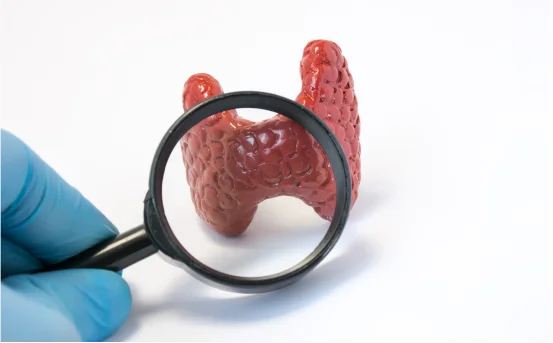Scleral buckling surgery involves placing a silicone band (called a “buckle”) around the eye to relieve traction on the retina and help it reattach to the underlying tissue. While newer methods like pars plana vitrectomy and pneumatic retinopexy have become more common in recent years, scleral buckling continues to be a preferred option in specific cases especially in younger patients or those with uncomplicated peripheral retinal tears.
Your eyes are your window to the world and when something threatens your vision, it can be frightening. One such sight-threatening condition is retinal detachment, a medical emergency where the retina the thin layer of tissue at the back of the eye pulls away from its normal position. Left untreated, this condition can lead to permanent vision loss. Fortunately, modern ophthalmology offers several advanced surgical options to repair retinal detachment, and one of the most time-tested procedures is scleral buckling surgery. This technique has been successfully used for decades to restore vision in patients with retinal tears and detachments, particularly those involving the peripheral retina.
What is Scleral Buckling Surgery?
Scleral buckling surgery is a type of eye surgery designed to repair a detached retina, a condition where the retina pulls away from the back of the eye. This detachment disrupts the retina’s function and can lead to partial or complete vision loss if not promptly treated.
The term “scleral buckle” refers to a piece of silicone or sponge that is sewn onto the sclera, the white outer layer of the eye. This buckle acts like a belt, gently pressing the wall of the eye inward to relieve the pull on the retina, helping it reattach and heal.
Why is Scleral Buckling Surgery Performed?
This surgery is primarily used to treat rhegmatogenous retinal detachment (RRD) the most common type of retinal detachment, caused by a tear or hole in the retina.
Common causes of retinal detachment include :-
-
Aging, leading to thinning of the retina
-
Severe nearsightedness (myopia)
-
Eye injuries or trauma
-
Complications from cataract surgery
-
Family history of retinal problems
Your ophthalmologist may recommend scleral buckling surgery if :-
-
The retinal detachment is caused by one or more retinal tears.
-
The detachment is in the peripheral retina, making it accessible for buckling.
-
Other conditions (e.g., clear eye media) make vitrectomy less suitable.
How is the Scleral Buckling Procedure Done?
Pre-Surgery Evaluation
Before surgery, your eye doctor will perform a thorough eye exam, including fundus photography, ultrasound imaging, and possibly an OCT scan to assess the retina’s condition. You may be asked to stop certain medications, fast before surgery, and arrange for someone to accompany you.
The Surgical Procedure
-
Anesthesia :- The surgery is typically done under local anesthesia with sedation, though general anesthesia may be used in some cases.
-
Identifying the Tear :- The surgeon locates the retinal tear or hole using special lenses.
-
Cryopexy or Laser Photocoagulation :- These techniques are used to seal the retinal tear.
-
Placement of Buckle :- A silicone band or sponge is sewn onto the sclera to “buckle” it inward.
-
Drainage of Sub retinal Fluid (optional) :- If fluid has accumulated, it may be drained to help the retina reattach.
-
Closure :- The surgeon closes the incision and applies antibiotic ointment and an eye patch.
The procedure usually takes 1 to 2 hours, depending on the complexity.
Types of Scleral Buckles
-
Segmental Buckle :- A small silicone piece used for localized detachment.
-
Encircling Band :- A band that wraps around the entire eye to support multiple tears.
-
Combined Approach :- Sometimes combined with vitrectomy for complex detachments.
Your eye surgeon will choose the most appropriate type based on the location and severity of your retinal detachment.
Benefits of Scleral Buckling Surgery
-
High Success Rate :- Especially effective for primary, uncomplicated retinal detachments.
-
Preserves Eye Anatomy :- No removal of the vitreous, preserving the natural structure.
-
Long-Term Effectiveness :- Once the retina is reattached, the buckle usually stays in place permanently.
-
Suitable for Younger Patients :- Often preferred in children or young adults with retinal tears.
Risks and Complications
Like all surgical procedures, scleral buckling surgery carries some risks. However, complications are relatively uncommon when performed by experienced surgeons.
Potential risks include :-
-
Infection (endophthalmitis)
-
Bleeding
-
Double vision (diplopia)
-
Cataract formation
-
Increased eye pressure (glaucoma)
-
Re-detachment of the retina
-
Exposure or infection of the buckle material
Discuss these risks in detail with your ophthalmologist before surgery.
What to Expect After Scleral Buckling Surgery?
Immediate Post-Op Period
After surgery, you’ll likely experience :-
-
Eye redness and swelling
-
Mild to moderate pain
-
Blurred vision
-
Sensitivity to light
You will be prescribed eye drops (antibiotics and steroids) and possibly pain medications. An eye patch may be worn for a day or two.
Recovery Timeline
-
First Week :- Avoid strenuous activities, bending, and lifting heavy objects.
-
2–4 Weeks :- Gradual improvement in vision and comfort.
-
6 Weeks and Beyond :- Vision stabilizes, but full recovery may take several months.
Life After Scleral Buckling
Most patients resume normal activities within a few weeks. However, some vision changes may be permanent depending on how long the retina was detached and whether the macula was involved.
Tips for Better Recovery :-
-
Avoid rubbing your eye
-
Follow all medication instructions
-
Attend all follow-up appointments
-
Report new symptoms immediately, such as flashes, floaters, or sudden vision loss
Conclusion
Scleral buckling surgery remains a safe, effective, and time-proven method to treat certain types of retinal detachment. With prompt diagnosis and skilled surgical intervention, it offers a high chance of retinal reattachment and vision restoration.























